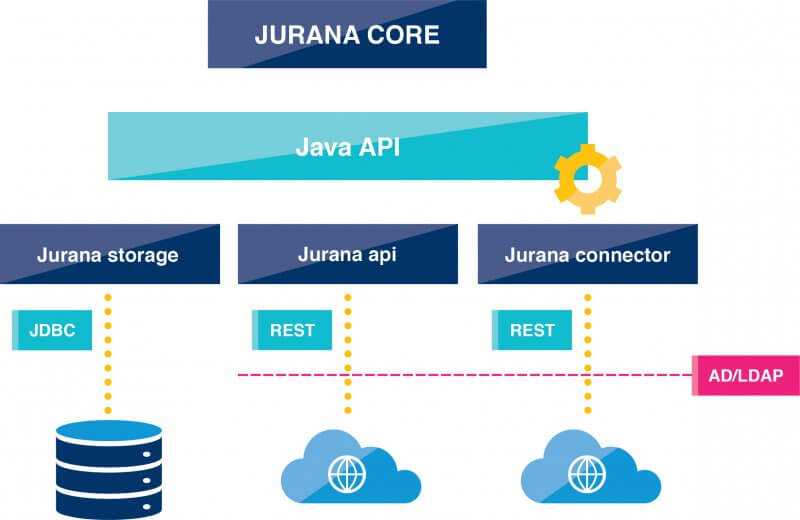Enterprise service bus Jurana
Integration – a key element of successful digitization
Standard ESB (Enterprise Service Bus) solutions usually only support certain interfaces for connection or integration with other systems. The problem arises when a company has several standard solutions, each with different interfaces and implementation tools. Mastering integrations in such a system quickly becomes impossible.
Digitization is further complicated by the high frequency of necessary changes, an additional challenge is the fact that traditional point-to-point integrations are no longer suitable for modern solutions, which are distributed between different locations, systems, and clouds. If we do not tackle the challenges of integration comprehensively, we may end up in a situation where we have many different standard solutions in the company, each of which works perfectly for itself, but do not function as a whole at all.
Integrations should not be underestimated
The complexity of integrating individual solutions into existing or new IT environments is often ignored. The practice of companies is to leave the of standard solutions to their providers. But this leads to tightly coupled partial solutions that are difficult to maintain and upgrade, and at the same time, compatibility when adding new solutions is highly questionable.
There is no magic wand to solve all the issues with integrations. Merely buying new tools does not solve (all) the challenges. Perhaps this is an acceptable approach in simple integrations and in environments where two or three systems are combined and the integration is performed only at the data level. When we are dealing with complex integration scenarios and two-way synchronous communication is necessary to carry out a certain part of the business process, the challenge of integrations becomes something completely different.
From ESB to JURANA
In Informatika, we chose the evolutionary approach to tackling the challenge of integrations. Initially, we used the classic ESB solution of one of the well-known IT providers. Many years of experience in solving challenges have led our experts to decision to create our own implementation framework for the purposes of integrating systems and solutions. This tool had to address problems that we had previously encountered on a regular basis, such as the inconsistent operation of the ESB platform used, the lack of operational oversight, the high hardware load, and the complexity of developing and managing integration scenarios.
Our goal was to accelerate the development and upgrading of integrations and make them more flexible. Integrations in our system are the exchange of messages via the service bus between N different information systems. At the forefront are not tools, but a competent team of business analysts who get to know the content in detail and identify the requirements for compatibility between systems, and then put this into practice.
Today, Informatika uses its own integration platform, named JURANA. It is a single framework, developed in Java, to support the implementation of integration procedures. The framework consists of several loosely coupled modules. Special attention in the development of the framework was paid to the review of developments in the process of implementing integration scenarios. To this end, we have developed a separate system for monitoring and re-triggering these scenarios – the so-called integration manager.

Ideal for complex environments
More than 30 different information systems have already been integrated with the JURANA platform. The integration includes CRM and ERP systems, billing solutions (eIS), AMS (IBM Maximo) systems, document systems, GIS systems and many other. Around 450 integration scenarios have already been implemented, and over 250,000 integration procedures are launched on a monthly basis.
Marko Rogan, Deputy Head of the Business Informatics Department at Elektro Maribor: “This platform makes it much easier to support our users, as we have a direct insight into the implementation of all integrations through the integration manager. In case of exceptions or errors on sink systems, the integration scenarios can be repeated in a very simple way. The introduction of new solutions and the integration of these solutions into existing systems is now much easier. “
We have also successfully used all the advantages brought by the JURANA platform in the implementation of the data exchange system for the electricity market at the EVT solution (Single Entry Point). It is a system that enables the exchange of data between various stakeholders in the electricity market, including end users. At the EVT, we record around three million service calls per month on the B2B channel. JURANA is also used in the implementation of the web and mobile application Moj elektro, which enables the end user to view data from metering points, view metering data, diagrams of 15-minute consumption and much more.